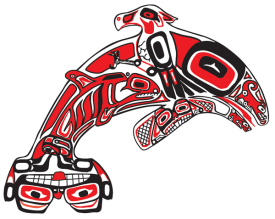By Sarah R Zaniewski; TFW/Habitat Biologist, Squaxin Island Tribe
 This submission is in response to the article published in the March 2017 Waterline Newsletter; “Environmental benefits from dredging soft sediment from a small recreational lake in Western Washington” (Plotnikoff et al. 2017). The Squaxin Island Tribe (the Tribe) wishes to supply additional information in an effort to clarify some crucial points.
This submission is in response to the article published in the March 2017 Waterline Newsletter; “Environmental benefits from dredging soft sediment from a small recreational lake in Western Washington” (Plotnikoff et al. 2017). The Squaxin Island Tribe (the Tribe) wishes to supply additional information in an effort to clarify some crucial points.
The Cranberry Creek Watershed, which includes Lake Limerick, is within the Tribe’s Usual and Accustomed Fishing Area. It supports anadromous runs of chum, coho, cutthroat and steelhead, all of which are commercially and culturally important to the Tribe. Since the late 1990’s, coho runs have significantly declined in the watershed. In 2007 steelhead were listed under the Endangered Species Act as threatened. Any actions that may negatively impact fish and fish habitat are of concern to the Tribe. The dredging project discussed in the article is one such activity. The Tribe raised concerns when the project was proposed and continues to have concerns now that the project is complete. The Tribe’s primary issue was that the activities could have a negative impact on fish and fish habitat, especially given that the proposal was to dredge within the mainstem of Cranberry Creek that flows into Lake Limerick. Dredging activities displace and/or damage the benthic communities and can displace or cause mortality to fish in the immediate area of the project. Additionally, the Tribe had concerns that the dredging activities and equipment could further spread the invasive aquatic plants present in Lake Limerick (Lane et al., 2012).
The primary point of contention from the article that the Tribe wishes to provide comment on is with the statement, “The current project was focused on improving in-lake fisheries habitat by dredging fine sediments that covered the mouths of two tributaries to the lake.” While fine sediments were in fact dredged, the assertion that the project was focused on improving in-lake fisheries habitat is false. In various meetings prior to the commencement of the project, the consultant asserted that the project was for increasing recreational access and boat navigation for homeowners, not for improving the quality of the habitat. Furthermore, the project description found within the initial “Lake Limerick Dredging Project Habitat Management Plan” (Lane et al., 2012) clearly states: “The objective of the project is to restore water dependent use to a series of properties impacted by extreme flood events over the past two years. Sediment from the two contributing tributaries has been deposited into the lake, decreasing the depth by one to three feet through the two sites. The reduced depth has resulted in navigational hazards to boats…” Nowhere in the document does it state that the dredging project’s intent is to improve water quality or fish and wildlife habitat.
The Hydraulic Project Approval Permit (HPA) that was issued for the dredging project (HPA #2015-6-527) by the Washington Department of Fish and Wildlife (WDFW) included mitigation measures to offset impacts to fish and fish habitat resulting from the dredging activities. These mitigation measures were also required by the Mason County Hearing Examiner’s Shoreline Substantial Development Permit Findings, Conclusions and Decisions (July 9, 2015) as part of the County’s SEPA permit (SEP2013-00010) for the project. Mitigation is not required for projects that are determined to improve fisheries habitat, it is only required when an activity is determined to have negative impacts to the resource. Additionally, a letter was written by WDFW in response to the Mitigated Determination of Non-significance for Lake Limerick Dredging issued by Mason County, which stated WDFW understood that the project was for recreation purposes.
In closing, it is disappointing and extremely disconcerting to the Tribe that the authors of the article are attempting to pass off the dredging activities as having any other purpose than what the intent of project was: to increase the depth of the lake by removing [naturally occurring] sedimentation to restore recreational opportunities to property owners.
References
Lane et al., 2012. H. Lane, L. Board. Lake Limerick Dredging Project Habitat Management Plan. Mason County, Washington.
Mason County. 2013. Department of Community Development; Planning Division. State Environmental Protection Act Permit #SEP2013-00010
Mason County. 2015. Washington State Shoreline Hearings Board. Shoreline Substantial Development Permit: Findings, Conclusions and Decisions.
Plotnikoff et al. 2017. R.W.Plotnikoff, H.L. Gibbons, J. Bernert. Environmental Benefits from Dredging Soft Sediment from a Small Recreational Lake in Western Washington.
Washington Department of Fish and Wildlife. 2015. Hydraulic Project Approval #2015-6-527









